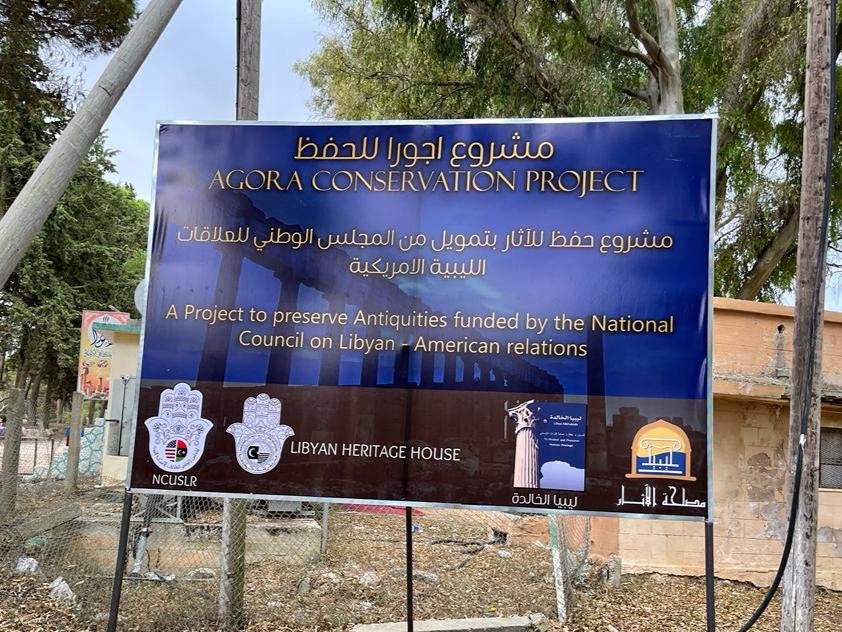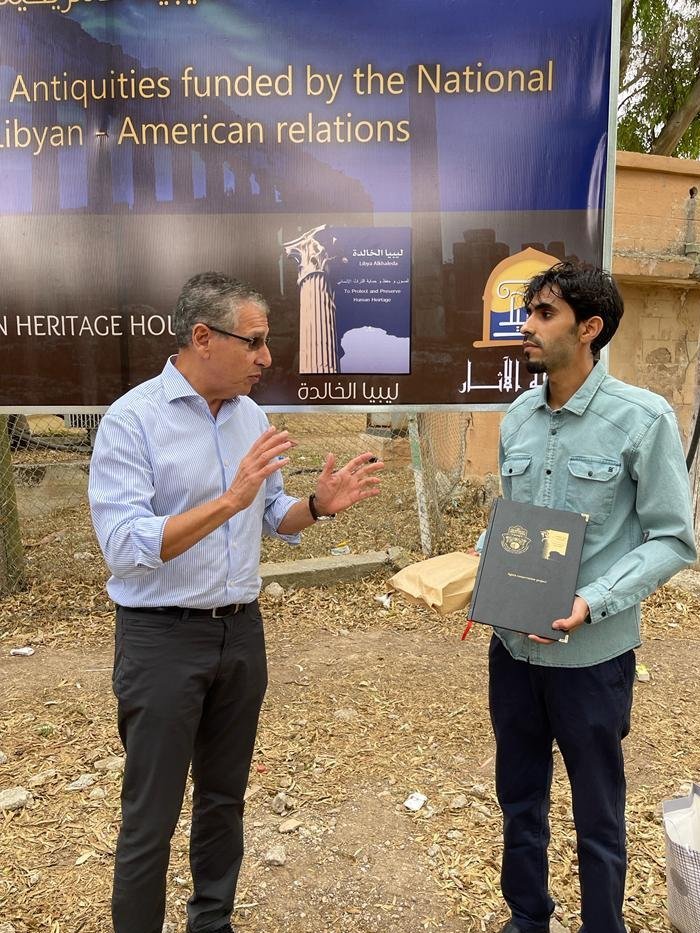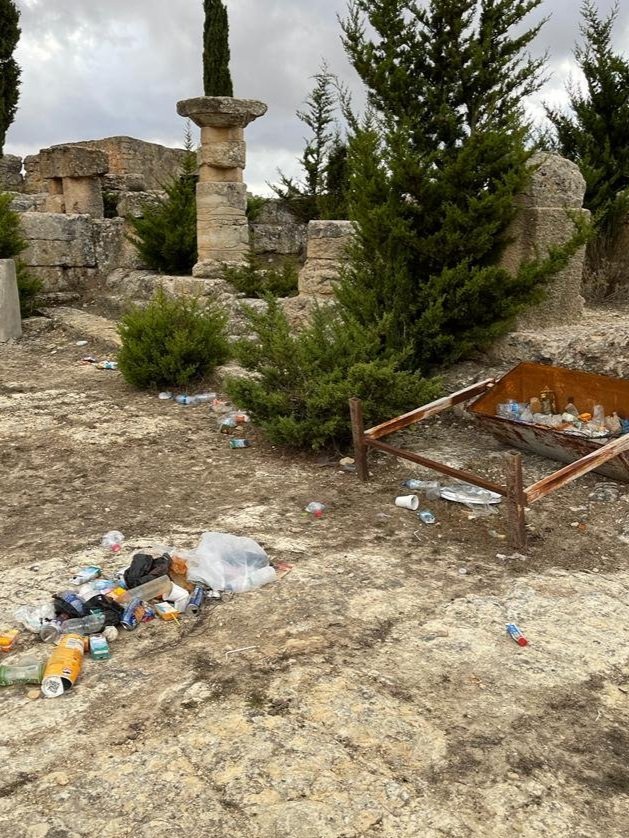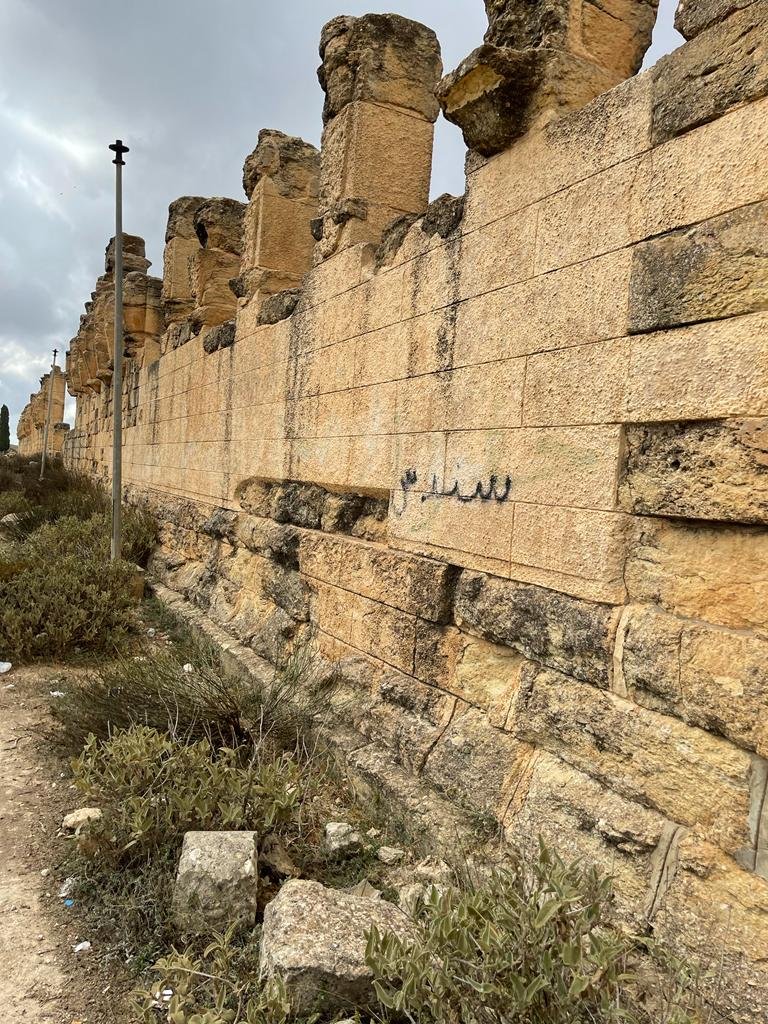lhh CONSERVATION PROJECT 2024-2025
OLBIA (THEODORIAS)
RESTORATION PROJECT
Annually, the Libyan Heritage House funds a dedicated preservation and restoration project of national significance. Libyan Heritage House’s 2024-2025 Libyan conservation initiative is the restoration of the archeological site present at the ancient Byzantine city of Olbia (Theodorias in Byzantine times). We are pleased to announce that we have once again partnered with the Immortal Libya Organization to sponsor this important initiative for cultural preservation. Located in Cyrenaica, between Marj and Bayda, Olbia was originally inhabited by the Greeks in the 4th Century BC, and later re-established as Theodorias by the Byzantine emperor Justinian in 539 AD. Today, Olbia holds a vital repository of artifacts of great archeological significance.
Mosaics from the archeological site of Olbia (Theodorias during Byzantine times)
The project will commence with a comprehensive professional cleaning and securing of the site, which includes two early Christian churches of immense historical value. Olbia is home to intricate Byzantine mosaic panels, which depict various scenes from mythology and daily life in ancient times. The professional cleaning and repair of these mosaics is a central focus of Phase One, aiming to not only preserve their beauty but also to enhance their visibility for educational interests and tourism.
Phase One of the Olbia Project is expected to take approximately six months to complete, with the team from Immortal Libya, collaborating closely with Libyan Heritage House and international experts as needed to ensure the highest standards of restoration and preservation practices. Local officials have expressed their enthusiasm for the project, highlighting the potential economic and educational benefits it will bring to the region.
The Olbia Project is part of a broader effort by the NCUSLR and The Libyan Heritage House to revitalize historical sites across Libya, which have suffered from neglect and damage over the years due to conflict and economic challenges. Future phases of the project, will focus on developing a visitor center and expanding educational programs.
As work begins on this critical restoration, the Olbia Museum stands poised to reclaim its status as a beacon of cultural heritage, drawing visitors from around the world to experience the beauty and richness of Cyrenaica’s ancient past. The community eagerly anticipates the impact this project will have, both in preserving history and fostering a renewed sense of pride in their shared cultural legacy.
lhh CONSERVATION PROJECT 2022-2023
THE agora of cyrene
conservation project
Libyan Heritage House’s 2022-2023 Libyan conservation initiative is the preservation of the Agora archeological site of Cyrene in the Green Mountain region of Cyrenaica, Libya. We are pleased to announce that we have partnered with the Immortal Libya Organization to support and sponsor their efforts to preserve this important UNESCO World Heritage Site.
About the CYRENE Agora Conservation Initiative
In 2017, UNESCO added Cyrene to its list of World Heritage in Danger due to its vulnerability to ongoing destruction, vandalism and theft in the wake of regional instability which has plagued Libya. The archeological ruins of the Agora at Cyrene have been left without proper security and regulated entry, resulting in the improper maintenance of these priceless archeological relics and continued defacement and destruction by trespassers.
With the support of the Libyan Heritage House of the National Council for Libyan US Relations, the highly qualified and motivated team at the Immortal Libya Organization will be undertaking this important 2022 project for the clean-up, preservation and security of the Agora archeological site of Cyrene. The project will see the team undertake the important tasks of: (i) rectification and surface cleaning works to remedy damage caused by vandalism; and (ii) the installation of a secure perimeter and security system, to deter further authorized access and potential vandalism.

Agora Conservation Project

Dr. Shennib, Chairman of NCUSLR, Visiting the Site with the Eternal Libya Organisation

Dr. Shennib, Chairman of the NCUSLR, meeting with the Eternal Libya Organisation at the Agora of Cyrene to mark the commencement of the Conservation Project.

Waste pollution of the Agora at Cyrene

Vandalism at the Agora of Cyrenaica

Vandalism at the Agora of Cyrene

Effects of Environmental Pollution

Garbage polluting the Agora

Preserving the Agora of Cyrene for future generations.
History of Cyrene
The archaeological site of Cyrene has long been considered one of the most important human heritage sites in the world and was designated a UNESCO world heritage site in 1982 (UNESCO ID 190).
According to Greek historical accounts contained in Herodotus’ Histories IV, Cyrenaica was founded in 631 BC as a settlement of Greeks from the island of Thera and developed quickly into the most important of the five primary cities of the North African extension of the Greek Empire, known as the Pentapolis and later became an important part of the Roman empire. The eastern Libyan province of Cyrenaica continues to use the name which it derived from the city of Cyrene over two millennia ago.
Prior to its destruction by a series of devastating earthquakes in the 4th century AD, Cyrene had grown into a city of incredible wealth, displayed in the numerous edifices of architectural and cultural significance (the remains of which are still visible amongst the archeological ruins of Cyrene, for posterity to study and marvel at). The Agora region of the city contained most of the major civic buildings, as well as shops, the theater, and temples, including the renowned temple of Apollo, constructed in the 7th century BC, the temple of Demeter, and the partially unexcavated temple to Zeus. Countless other remains of archeological significance including statues, pillars and inscriptions (which require further study), remain at the ruins of the Agora of Cyrene.





